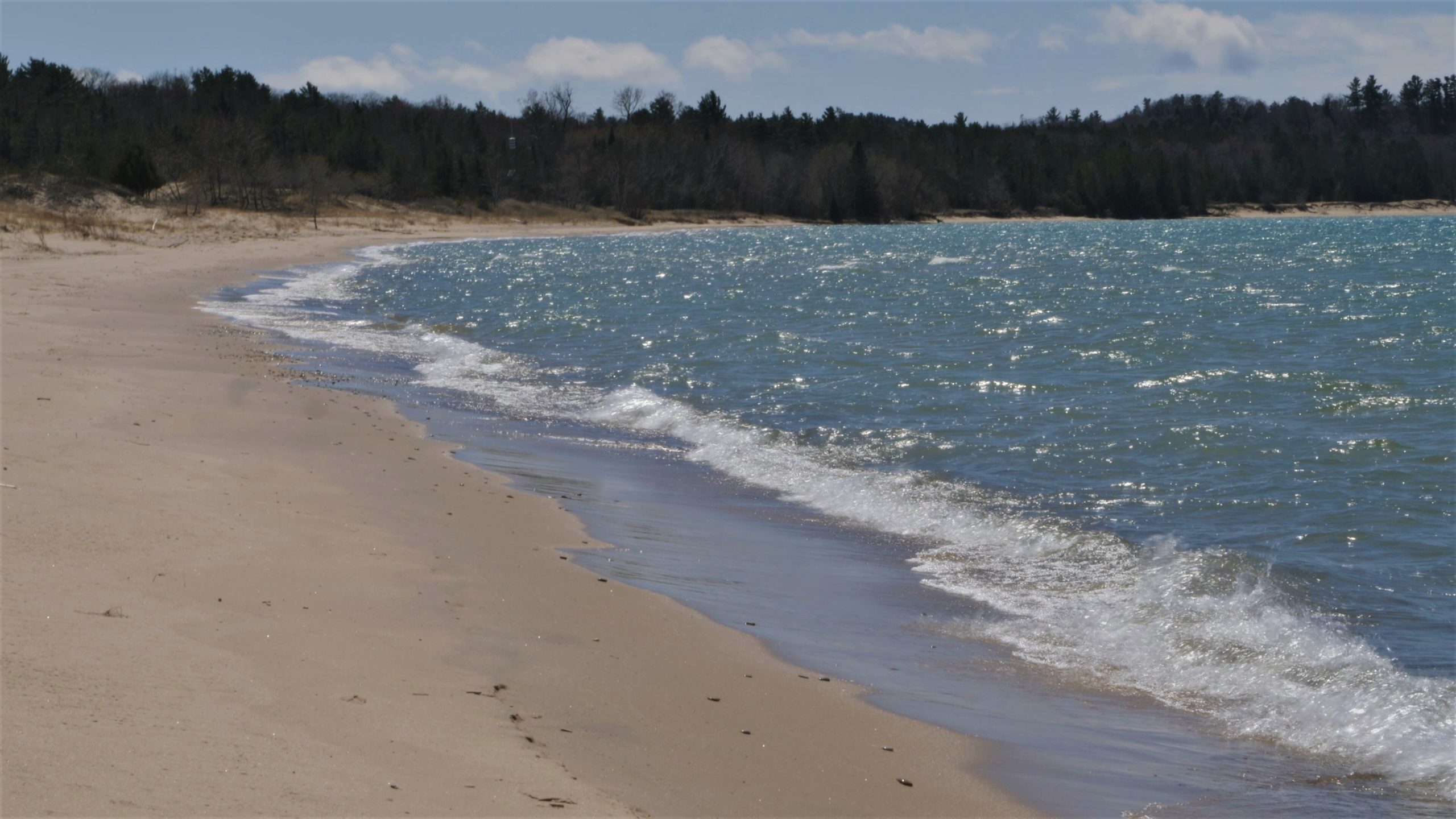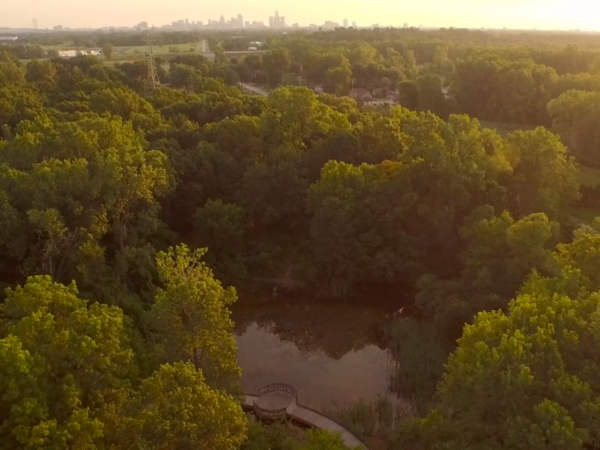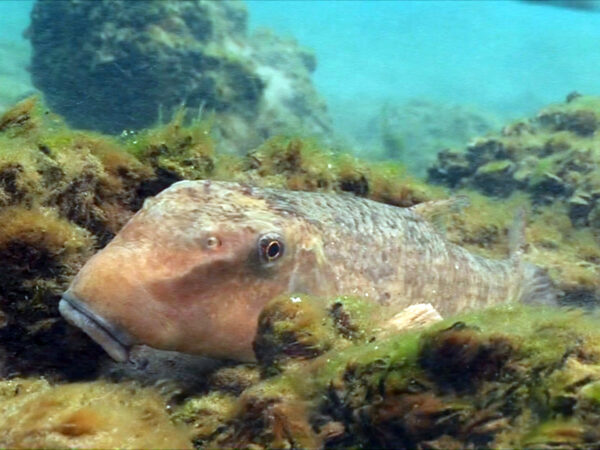
This story is the third in a four-part series looking at sturgeon restoration efforts.
Lake sturgeon restoration efforts are taking place across the Great Lakes basin.
But what that restoration looks like is entirely dependent on location and other factors, such as whether or not any lake sturgeon remain in the area.
In the few locations in the Great Lakes where lake sturgeon still spawn successfully, restoration efforts are focused on studying and managing those existing populations or boosting low populations. In the majority of the Great Lakes rivers and bays where the lake sturgeon populations have been lost, the restoration goal is to bring them back.
In Wisconsin and northern Michigan, two healthy populations of lake sturgeon spawn near the base of dams. On some rivers, streamside hatcheries are popping up. Other areas are using traditional stocking methods to increase lake sturgeon numbers.
Bringing back a lost species
Lake sturgeon no longer spawn in Green Bay, Georgian Bay, Saginaw Bay or even Sturgeon Bay. The vast majority of rivers and bays across the Great Lakes region that once hosted hundreds of thousands of lake sturgeon have lost their sturgeon populations.
Eric Hemenway, director of repatriation, archives and records with the Little Traverse Bay Band of Odawa Indians, grew up in Cross Village just south of Sturgeon Bay on the northeastern shore of Lake Michigan.
Hemenway said it has been decades since lake sturgeon spawned in the Sturgeon River or visited Sturgeon Bay.
Similarly, the River Raisin, which is a large tributary that flows into northwestern Lake Erie, was called the Nummaseppi or River of the Sturgeon by the Potawatomi Nation. Yet, Chief Ted Roll of the Wyandotte Nation in Monroe, Michigan, said it has been more than 50 years since lake sturgeon spawned in the River Raisin.
Restoring sturgeon to Sturgeon Bay, the River Raisin or hundreds of other locations where the lake sturgeon are completely gone presents a whole new management challenge.
Repopulating necessitates that fertilized eggs, larvae or hatchlings be acquired from somewhere else.
The Wolf, Black and Upper St. Clair rivers currently host the three largest populations of lake sturgeon in the Great Lakes basin. Each population is large enough and healthy enough to act as a restocking source.
In 2000, a multi-agency, multi-state program to reintroduce lake sturgeon into the Tennessee River system began. Young-of-year sturgeon from the Wolf River hatchery in Wisconsin were transplanted to rivers in Tennessee.
By 2011, more than 90,000 lake sturgeon from the Wolf River had been released into the Tennessee River system. A 2017 study found many of the hatchery fish survived. But stocking efforts alone will not be enough to restore a healthy population. To thrive on their own, the sturgeon must spawn naturally.
All of the male lake sturgeon released in 2000 have reached sexual maturity. The earliest a female lake sturgeon from the 2000 release might have spawned was 2018. By this past spring, many of the 2000 class females have come of age.
Assessments of the transplanted lake sturgeon are continuing, but so far, there have been no published reports of lake sturgeon spawning in the Tennessee River.
A similar multi-agency, interstate restoration project was launched in 2018 to repopulate lake sturgeon into Saginaw Bay. The 10-year plan calls for stocking up to 2,000 lake sturgeon every year into four of the largest tributaries that empty into the bay. The first sturgeon were released in August 2018, according to the SaginawBaySturgeon.org website.
Lake sturgeon collected on larval drift from the Black River and reared in the Black Lake hatchery in Northern Michigan are one of the source stocks being used for the Saginaw Bay project.
A second source of lake sturgeon come from the Upper St. Clair River where eggs are collected, manually fertilized and then shipped to a hatchery in Wisconsin. Near the end of August, when the fish reached about 5 inches in length, they were shipped back to Michigan and released into tributaries of Saginaw Bay.
The sturgeon stocked into Saginaw Bay will be tracked by researchers to assess whether the Black River or St. Clair River population is better suited to Saginaw Bay.
But it will be roughly 20 years before the lake sturgeon stocked into the Great Lakes this summer will be ready to spawn. Whether researchers will have unlocked how to get transplanted lake sturgeon to spawn naturally remains in question.
Chief Roll has never seen lake sturgeon spawning in the Nummaseppi River and he doesn’t expect to.
“It’s not gonna happen in my lifetime ‘cause I’m 70 years old,” he said, but he is hopeful that today’s restoration efforts “will benefit my grandkids and their grandkids.”
The next part in the series looks at the Blue Water Sturgeon Festival.
Catch more news on Great Lakes Now:
Sturgeon Restoration: Streamside hatcheries on the Manistee, Milwaukee and Maumee rivers
Sturgeon Restoration: Studying Michigan’s and Wisconsin’s current flourishing populations
See the Sturgeon: The many ways to see, touch and appreciate sturgeon around the region
Featured image: Sturgeon Bay (Photo Credit: Greg Lashbrook/PolkaDot Perch)




